TOP-1000 companies with tax monitoring
Information agency Credinform represents a ranking of the largest Russian companies meeting the tax monitoring criteria.
Companies with the largest volume of annual revenue meeting the updated criteria of tax monitoring (TOP-1000) were selected for the ranking, according to the data from the Statistical Register and the Federal Tax Service for the latest available periods (2014 - 2019). The selection and analysis of companies were based on the data of the Information and Analytical system Globas.
Net assets are total assets less total liabilities. This indicator reflects the real value of the property of an enterprise. When the company’s debt exceeds the value of its property, the indicator is considered negative (insufficiency of property).
The largest company in term of net assets is JSC ROSNEFTEGAZ, INN 7705630445, Moscow. In 2019, net assets value of the company almost amounted to 3 939 billion RUB.
The lowest net assets value among TOP-1000 belonged to JSC ANTIPINSKY REFINERY, INN 7204084481, Tyumen region. The legal entity is declared insolvent (bankrupt) and bankruptcy proceedings are initiated, 04.01.2020. In 2019, insufficiency of property of the legal entity was indicated in negative value of -223 billion RUB.
Covering the six-year period, the average net assets values of TOP-1000 have a trend to increase with a decreasing growth rate (Picture 1).
 Picture 1. Change in industry average net assets value in 2014 – 2019
Picture 1. Change in industry average net assets value in 2014 – 2019Over the past six years, the share of companies with insufficient property had a positive trend to decrease (Picture 2).
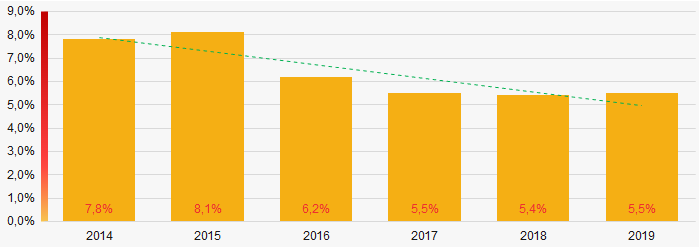 Picture 2. Shares of TOP-1000 companies with negative net assets value in 2014-2019
Picture 2. Shares of TOP-1000 companies with negative net assets value in 2014-2019Sales revenue
In 2019, the revenue volume of ten largest companies of the industry was 10% of total TOP-1000 revenue (Picture 3). This is indicative of low level of aggregation of capital in the industry.
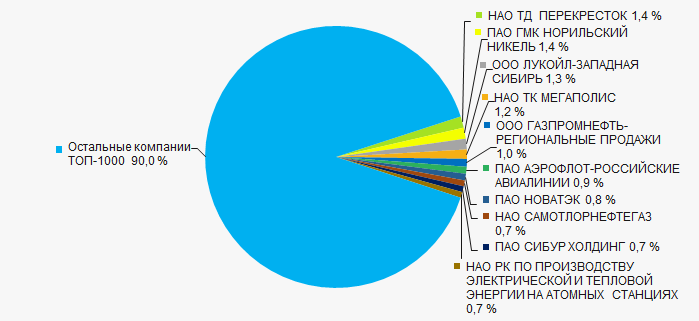 Picture 3. The share of TOP-10 companies in total 2019 revenue of TOP-1000
Picture 3. The share of TOP-10 companies in total 2019 revenue of TOP-1000In general, there is a trend to increase in revenue with the decreasing growth rate (Picture 4).
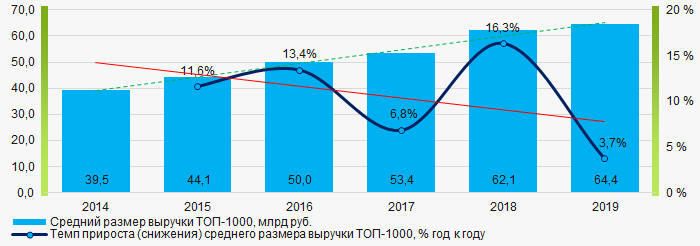 Picture 4. Change in industry average net profit in 2014 – 2019
Picture 4. Change in industry average net profit in 2014 – 2019Profit and loss
The largest organization in term of net profit is JSC MMC NORILSK NICKEL, INN 8401005730, Krasnoyarsk territory. The company’s profit for 2019 amounted to 15 billion RUB.
Covering the six-year period, there is a trend to increase in average net profit with the decreasing growth rate (Picture 5).
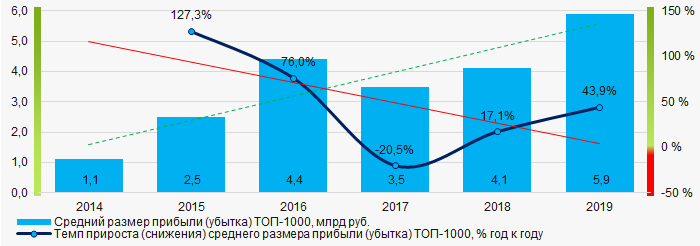 Picture 5. Change in industry average net profit (loss) values in 2014 – 2019
Picture 5. Change in industry average net profit (loss) values in 2014 – 2019For the six-year period, the average net profit values of TOP-1000 have the increasing trend with the decreasing net loss (Picture 6).
 Picture 6. Change in average net profit and net loss of ТОP-1000 in 2014 – 2019
Picture 6. Change in average net profit and net loss of ТОP-1000 in 2014 – 2019Key financial ratios
Covering the six-year period, the average values of the current liquidity ratio were within the recommended one - from 1,0 to 2,0 with a trend to increase (Picture 7).
Current liquidity ratio (current assets to short-term liabilities) shows the sufficiency of company’s assets to repay on short-term liabilities.
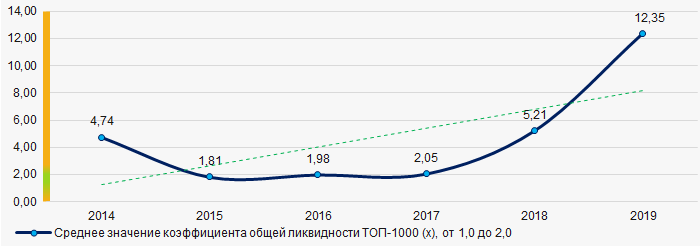 Picture 7. Change in industry average values of current liquidity ratio in 2014 – 2019
Picture 7. Change in industry average values of current liquidity ratio in 2014 – 2019 Covering the six-year period, the average values of ROI ratio have a trend to increase (Picture 8).
ROI ratio is calculated as net profit to sum of shareholders equity and long-term liabilities, and shows the return of equity involved in commercial activities and long-term borrowed funds.
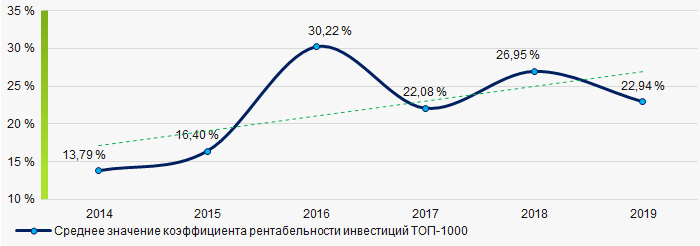 Picture 8. Change in industry average values of ROI ratio in 2014 – 2019
Picture 8. Change in industry average values of ROI ratio in 2014 – 2019Assets turnover ratio is the ratio of sales revenue and company’s average total assets for a period. It characterizes the effectiveness of using of all available resources, regardless the source of their attraction. The ratio shows how many times per year the full cycle of production and circulation is performed, generating the corresponding effect in the form of profit.
Covering the six-year period, business activity ratio demonstrated the increasing trend (Picture 9).
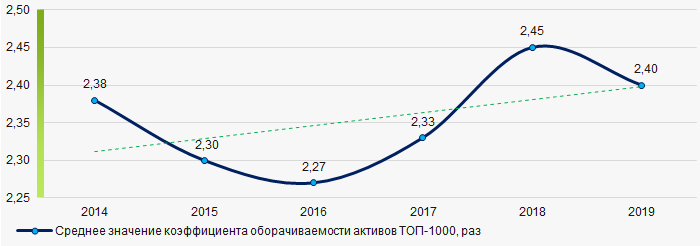 Picture 9. Change in average values of assets turnover ratio in 2014 – 2019
Picture 9. Change in average values of assets turnover ratio in 2014 – 2019Small business
Only one company of TOP-1000 is registered in the Register of small and medium-sized enterprises of the Federal Tax Service of the Russian Federation. Its share in total revenue of TOP-1000 is 0,03%.
Main regions of activity
Companies of TOP-1000 are registered in 67 regions of Russia, and unequally located across the country. Over 55% of companies largest by revenue are located in Moscow, Moscow region and Saint Petersburg (Picture 10).
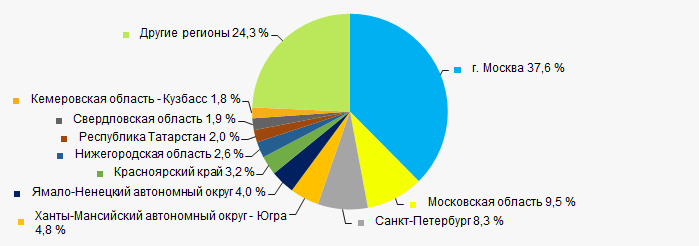 Picture 10. Distribution of TOP-1000 revenue by regions of Russia
Picture 10. Distribution of TOP-1000 revenue by regions of RussiaFinancial position score
Assessment of the financial position of TOP-1000 companies shows that more than a half of them have financial position above average (Picture 11).
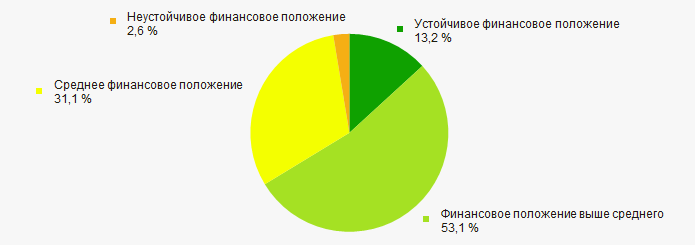 Picture 11. Distribution of TOP-1000 companies by financial position score
Picture 11. Distribution of TOP-1000 companies by financial position scoreSolvency index Globas
Most of TOP-1000 companies got Superior / High and Strong / Medium indexes Globas. This fact shows their limited ability to meet their obligations fully (Picture 12).
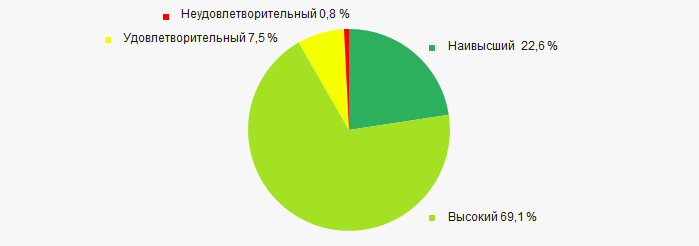 Picture 12. Distribution of TOP-1000 companies by solvency index Globas
Picture 12. Distribution of TOP-1000 companies by solvency index GlobasConclusion
Complex assessment of activity of the companies meeting the tax monitoring criteria, taking into account the main indexes, financial ratios and indicators, demonstrates the prevalence of positive trends in 2014 - 2019 (Table 1).
| Trends and evaluation factors | Relative share of factors, % |
| Dynamics of the average net assets value |  10 10 |
| Rate of growth (decrease) in the average size of net assets |  -10 -10 |
| Increase (decrease) in the share of enterprises with negative values of net assets |  10 10 |
| Level of competition / monopolization |  10 10 |
| Dynamics of the average revenue |  10 10 |
| Rate of growth (decrease) in the average size of revenue |  -10 -10 |
| Dynamics of the average profit (loss) |  10 10 |
| Rate of growth (decrease) in the average profit (loss) |  -10 -10 |
| Growth / decline in average values of companies’ net profit |  10 10 |
| Growth / decline in average values of companies’ net loss |  10 10 |
| Increase / decrease in average values of total liquidity ratio |  5 5 |
| Increase / decrease in average values of return on investment ratio |  10 10 |
| Increase / decrease in average values of asset turnover ratio, times |  10 10 |
| Share of small and medium-sized businesses in terms of revenue being more than 22% |  -10 -10 |
| Regional concentration |  -10 -10 |
| Financial position (the largest share) |  10 10 |
| Solvency index Globas (the largest share) |  10 10 |
| Average value of relative share of factors |  3,8 3,8 |
 positive trend (factor),
positive trend (factor),  negative trend (factor)
negative trend (factor)
Changes in legislation
Tax monitoring as a new form of control was introduced in a separate section "V.2." in part one of the Tax Code of the Russian Federation by the Federal Law No. 348-FL of November 4, 2014.
Tax monitoring consists in providing tax authorities with access to taxpayers' accounting records for real-time control. If errors are found in accounting, the tax authorities are obliged to inform taxpayers about this.
This form of control is possible only upon a voluntary application of taxpayers and a decision of the tax authorities under the certain conditions.
The Federal Law No. 470-FL of December 29, 2020, amended the RF Tax Code providing for a significant reduction in the criteria for tax monitoring.
In particular,
- the amount of taxes paid for a calendar year has been reduced from 300 to 100 million RUB;
- the annual total volume of income received and total value of assets has been reduced from 3 to 1 billion RUB.
In addition, the changes affected the grounds for conducting on-site inspections for the period when tax monitoring is carried out. Thus, on-site inspections are carried out in case of non-fulfillment by the taxpayer of the reasoned conclusions of the tax authorities before December 1 of the year following the period of tax monitoring. Previously, this period was not set. Clarification of tax returns with an increase in loss can also be a reason for on-site inspections.
The amendments also provide for:
- the right of officials of tax authorities conducting tax monitoring to demand from counterparties or other persons documents or information regarding the activities of taxpayers;
- the duty of tax authorities to notify taxpayers in electronic form about the appearance of grounds for early termination of tax monitoring and the right of taxpayers to provide appropriate explanations in this regard.
According to the Federal Tax Service of the Russian Federation, in 2017 tax monitoring was carried out in 21 organizations, in 2020 - in 95. Based on the results of consideration of the submitted applications, in 2021 this form of tax control will be applied for 209 companies.
Reducing the criteria for tax monitoring provides the potential for such control to be carried out on more than 5,000 taxpayers. Calculations are based on the data from the Information and Analytical system Globas.